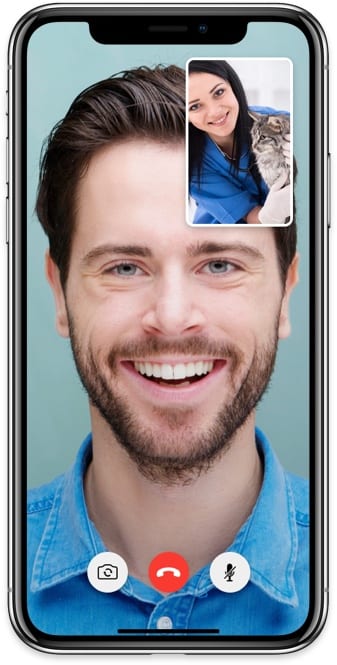8 Apr 2020
In these difficult times, providing veterinary care has suddenly become a serious challenge. Animals still need medical help and clinical teams across the UK have been turning to new ways of fulfilling their duty of care…

Image © Eva-Katalin / iStock
Technology capable of delivering veterinary medicine remotely in a simple, yet highly effective, way has suddenly gone from being a business aspiration to a business essential.
During the past few weeks as the world grapples with the coronavirus outbreak, telemedicine has proven to be a powerful clinical tool and a crucial lifeline for the veterinary profession.
Working remotely, but staying connected digitally, has allowed vets, nurses, clients and their pets to stay safe and help practices keep vital revenue coming in.
Let’s hope this is all over soon, but even when life does get back to normal, veterinary businesses with the ability to deliver remotely and engage in new ways with their clients will have a significant competitive edge.
“PetsApp is built with operational flexibility in mind. For example, we have role-based text chat, engaging the whole veterinary team: receptionists, nurses and vets,” said Thom Jenkins, a qualified vet and co-founder of PetsApp.
“However, a nurse or vet can elect to pick up chats from the reception queue if they so choose, reflecting the fact that in some clinics each team member may fill multiple roles at different times. Members of the veterinary team can also hand off cases to each other, allowing them to collaborate in the care of a patient no matter where they are. The flexibility of text chat augments the video consultation really well, widening the top of the funnel and giving the veterinary team more patient advocacy opportunities.”
While video consultations are an important component of the PetsApp package, it’s only one part of the complete solution.
The company works with practices on every aspect to set them up for success by managing client expectations, ensuring they “wow” clients with their digital offering.
Thom added: “Every interaction on PetsApp starts with an automated message where the clinic can set expectations around response time, note opening hours, and give instructions on what the app can and cannot be used for. Also, while a client can request a video consult, there is no button for a client to commence a video consult – these can only be started by the clinic at a time of their offering.
 “Our app also has integrated payments – Apple Pay, Google Pay, and credit and debit card. Clinics choose when to request payment and for how much. PetsApp does not take any commission on the payment processing fees, so clinics can use the platform to take digital payment for any or all products and services, not just telemedicine services.”
“Our app also has integrated payments – Apple Pay, Google Pay, and credit and debit card. Clinics choose when to request payment and for how much. PetsApp does not take any commission on the payment processing fees, so clinics can use the platform to take digital payment for any or all products and services, not just telemedicine services.”
The Veterinary Innovation Council has estimated that 92% of all pet issues go unaddressed by veterinary expertise. That’s 92% of all pet issues going unaddressed by the people best placed to address them – the local veterinary team.
By providing a low effort entry point for pet owners to access veterinary expertise, PetsApp can increase the total addressable market for veterinary products and services, while also increasing patient advocacy opportunities.
Thom added: “Clearly, veterinary clinics can charge for telemedicine services, but they can also use PetsApp to deliver push notification campaigns to close compliance gaps. For example, you can drive parasiticide compliance while facilitating click-and-collect ordering of these medications, where appropriate, via the app – taking payment in advance of collection. If the patient hasn’t been seen recently enough to allow fulfilment of the order, the team can recommend and book an in-clinic appointment via the app. You can even take payment for in-clinic procedures, reducing traffic through reception at peak periods.”
The team has also seen an interesting trend in nurses making use of PetsApp for inpatient updates to pet owners; helping eliminate the games of “phone-tag”, and improving veterinary nurse utilisation and job satisfaction.
PetsApp also allows the veterinary team to prioritise workflows and it is also worth noting that 40% of PetsApp interactions lead to an appointment recommendation, and more than 30% result in an appointment being booked via the app.
With remote medicine very much in everyone’s minds right now, services like PetsApp can allow first opinion veterinary practice to move with the different requirements of a rapidly evolving client base.
Thom said: “Millennials are now the largest pet-owning demographic. There’s also evidence that they are the most compliant, being more likely to comply with dental recommendations for their pets, for example. However, the majority of millennials describe veterinary services as inaccessible, in contrast with the majority of baby boomers who see veterinary services as perfectly accessible.
“Anything that helps engage this large population of highly compliant pet owners has to be a good thing, and PetsApp does exactly that.”